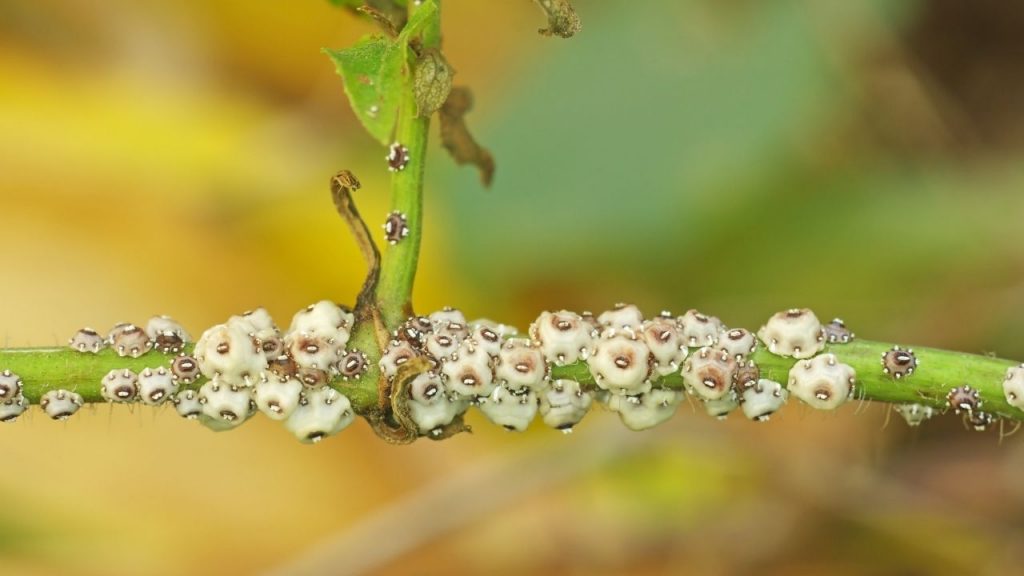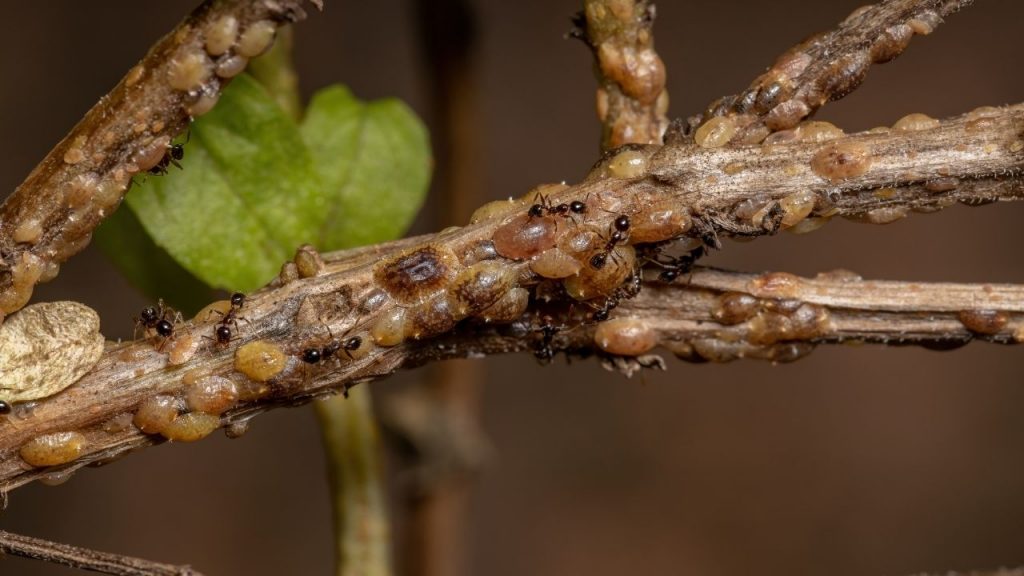Are you wondering what are scales on plants- Scales are tiny little bugs smaller than Aphids on the plants that happen due to bacterial diseases and infection.
They are extremely harmful to both indoor and outdoor plants, once infected, they double very fast. So it’s very important to identify them in the early stage, to control scales on plants.
In this blog, we are going to discuss everything on scales from how to identify them, types of scale, and what are the conditions they prefer to stay on houseplants.
- Scale Bugs – What Are They?
- Scale Insects Varieties/Species
- What Kinds of Vegetation Do They Prefer?
- What Is the Appearance of Scale on Trees and shrubs?
what are scales on plants
Potted plant scales have always been disgusting-looking creatures that drain the sap from plants’ foliage and shoots, culminating in reduced or distorted leaf development, discoloration of the foliage, brown blotchy spots, and perhaps foliage loss.

Potted plant scale is often seen on the branches as well as leaf joints of an infected potted plant, and further throughout the lines of the foliage, however, it can be found everywhere on a shrub.
Sticky fronds could also be seen on houseplants, inside their containers, even in the space where your shrub is situated.
When you’re confused about plant scale recognition, here is one method to try. Scale insects exude a sticky coating while they eat, which is a frequent symptom of an infection.
What Is the Appearance of Scale on Trees and shrubs?
Scale pests are extremely challenging to spot on plants. However if you ever do detect them, scale pests on potted plants resemble a strange growth rather than an insect.
They appear as little brown specks or lumps that do not move. They show up to us to be blisters on a shrub, which is exactly what you would assume they were the first moment you notice them.

They might be spherical, oval, even flattened, and their size could vary from hardly apparent to huge lumps on your shrub. Their coloring might span from brown to yellow to white.
Mealybugs are also white and fluffy scale insects that appear like mold on your potted plants.
Scale insects on trees and shrubs like to swarm, so when their numbers grow massive, they become very visible.
Like I previously stated, they don’t really resemble insects, thus you will most likely not detect them till your shrubs have gotten afflicted.
Scale Insects Varieties/Species
There really are around 8,000 different forms of plant insects. All of them are members of the superfamily Coccoidea, however, they are further classified into lesser family groupings.
Let’s have a look at a few of the most common scale insect species and discuss their commonalities and distinctions.
Coccidae (Coffee Scale)
- The coccidae have been a family of bacteria that frequently generate a waxy covering.
- While most oily pesticides will certainly remain on well sufficiently to have an impact, this white waxy layer could safeguard them towards a variety of insecticides.
- Coccus viridis, often recognized as coffee scale and otherwise, green scale has been one of the most well-known members of its family. Coffee scale is a prominent crop insect affecting coffee plantations.
- Notable wax scale varieties usually involve tree inhabitants such as the calico scale (Eulecanium cerasorum) and the cottony maple scale (Pulvinaria innumerabilis). To eat, these scales compress themselves onto tree limbs.
Margarodidae (Ground Pearls)
- Ground pearls have always been big size insects with odd appearances. Numerous of them have the appearance of being cottony and perhaps even fluffy.
- Others, including the Armenian cochineal, have a berry-like form and coloring. These are bigger than almost all other types of scale, attributable to their pillowy shell.
Pseudococcidae (Mealybugs)
- Mealybugs were also a kind of scale, which majority individuals are unaware of.
- They possess limbs, unlike other scales, although they rarely, if ever, relocate after they’ve found a suitable eating area. Greenhouse scale insects just like mealybugs seem to be frequent.
- They are common in farming regions and target a variety of industrial crops.
Eriococcidae (Woolly beech scale)
- Cryptococcus fagisuga, a woolly beech scale, is a perfect instance of an Eriococcidae.
- These scales resemble lumps and perhaps even mounds on stems and shoots and could be mixed up for stem blooms.
- Birds as well as helpful pests like ladybugs pose a threat to sapsuckers and certain other similar scales.
Diaspididae (San Jose scale)
- There are around 2650 different varieties of armored scale insects.
- Such scales, of course, possess an armor-like layer that they utilize to defend themselves against attackers and otherwise pesticidal treatments.
- Quadraspidiotus perniciosus, the San Jose scale, represents one of the best tenacious instances of an armored scale.
- This crop parasite is found all across the United States. Even though it was discovered in San Jose around the latter 1800s, it is believed to have originated in China.
- This same San Jose scale became the earliest scale bug to demonstrate pesticide tolerance during 1914.
- Aonidiella aurantii, the California Red Scale, would be another serious crop parasite.
- Although citrus trees are its principal prey, it also consumes olives and certain other fruits, as well as certain vegetables which include pumpkin.
What Kinds of Vegetation Do They Prefer?
These scale bugs dine on their target plant’s nectar and otherwise plant fluids.
The variety of trees and shrubs impacted, on the other hand, is exceedingly broad. Certain species love fruit-bearing trees such as tangerine, olives, and lemons.

However, some species target a vast range of bromeliads, blooming shrubs which include roses, and perhaps sometimes fruits and vegetable crops including brassicas as well as beans.
Scale insects may be spotted both indoors and outside. The spotting scale indoors usually indicates that you took an afflicted plant inside. It’s easier for them to move to neighbor potted plants, so keep an eye on it anyway!
Scale infection can cause untimely leaf dropping or yellowing of the foliage of a shrub. A prominent symptom is pale and perhaps even yellowish spots on foliage, twigs, or shoots.
Conclusion
It’s very important to identify scales on the plant. Because otherwise If you suspect later that scales have really expanded, and now it’s difficult to separate them.
I hope you find this article very helpful and it will give you some light on the What Are Scales On Plants.

My name is Olivia, and I live in the United States and love having plants in my garden. Lots of plants are there on my balcony, indoor and outdoor garden also. Here I am trying to share useful gardening tips, how to grow and care for various plants, etc.
